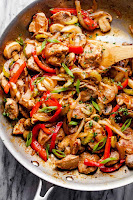Chinese food in American culture?
I will introduce a book I started reading which is related to food. The book title is, “The Fortune Cookie Chronicles: Adventures in the world of Chinese food” which was published in 2008 and the author is Jennifer 8.Lee.
I chose this book because I love Chinese food and I was interested in learning the culture of Chinese food in a different country. The author Jennifer was a New York Times reporter and she is a Chinese-American. I would like to talk about what I have read and learned from this book so far.
This book is about the author’s relationship with Chinese food and she was born in America. She feels she is an American, however, her appearance is Chinese so she and her siblings are known as bananas(yellow on the outside but white on the inside). The author talks about Chinese restaurants in America and how much she enjoys eating fortune cookies at the end of a Chinese meal. The first thing I learned is that there are some forty thousand Chinese restaurants in the United States which is more than the number of McDonald’s, Burger Kings, and KFCs combined. I was surprised that Chinese restaurants in America have average cooks that are more likely to speak Spanish than Chinese.
The author loved fortune cookies and it was one of her enjoyments to have them when she went to Chinese restaurants. However, she found out that fortune cookies weren’t Chinese food. It was Japanese food! She was concerned to know how fortune cookies had been introduced to the United States. English-language fortune cookies were already common in the 1940s in Chinese restaurants in San Francisco and southern California. Fortune cookies have little slips inside and the slips are usually written in Japanese, however, the messages soon appeared in English. Some successful companies started to offer flavored fortune cookies.
Jennifer found another food which is Chinese in America but it is unknown in China. The food is called “chop suey”. There were some theories of where chop suey had come from and how it spread so fast. One tale is that workers came to a Chinese restaurant before just closing and the cook takes the scraps from the kitchen and randomly mixes vegetables, meats, and brown sauce which was delicious for the workers. Another tale is historical and it is about a Chinese diplomat named Li Hongzhang visiting the United States in 1896 and having a dish made by a Chinese cook because Li has indigestions. When the guests asked for the name of the dish, they were told it is called chop suey. Both of them are uncertain theories and others were as well.
Reading this book so far, it was interesting to know that the Chinese food people imagine in America does not exist in China. The Chinese food in the United States had come from different countries or was made for Americans for them to enjoy the taste rather than having the real Chinese food in China. I was surprised with how different the dishes would change through different cultures and they have to change the tastes to make it popular.




コメント
コメントを投稿